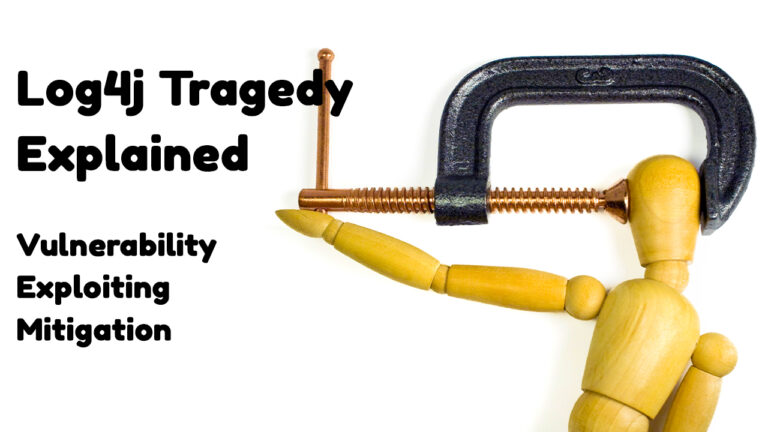Why most of the IoTs are Still STUPID! Top 10 IoT Vulnerabilities
Vulnerabilities in IoT Devices?
Intelligent and linked up to In a wide variety of domains and settings, the Internet of Things devices usher in a number of novel approaches to enhancing workflows and levels of productivity, boosting the quality of the user experience, and cutting operational expenses. Although the Internet of Things (IoT) devices are becoming increasingly popular, many of the products being installed do not have adequate security, which cybercriminals can exploit.
In spite of the fact that the benefits of the Internet of Things devices can be seen in places such as factories, hospitals, homes, and cities, the inherent vulnerabilities of these devices do create new security risks and challenges. Because of these vulnerabilities, networks are wide open to cyberattacks, which have the potential to severely disrupt both industries and economies.
Let’s Start from the Beginning – What is IoT?
The Internet of Things (IoT) has become one of the most important technologies of the 21st century in the last few years. There is a network of physical devices, such as computers, sensors, and other smart devices, all over the world that are now linked to the internet in order to collect data. This is known as the Internet of Things, or IoT for short. Thanks to embedded devices, we can now seamlessly communicate with people and processes as well as everyday objects such as kitchen appliances or automobiles or home thermostats, or baby monitors.
How Does IoT Work?
Exactly how does the internet of things work? There are actually two parts to this: the devices themselves and the network that connects them. An Internet of Things ecosystem is essentially made up of network-enabled smart devices that make use of embedded systems, such as processors, sensors, and other communication hardware, which will gather data from various sources, and send it to the recipients or whoever is in need of the data, and act on data that they acquire from the environments in which they are located.
After the data has been processed and delivered to its intended location, the software will process the data again, carry out some calculations, and then consider whether or not to carry out an action. This action can be anything, such as turning on a light bulb, opening the garage door, sending an alert, automatically adjusting the sensors or devices, or turning on the water pump without the need for the user to be present.
Even though the “things” that make up the internet of things (IoT) are beneficial to us, our homes, offices, and industries, the devices that make up these “things” can also introduce blind spots and serious security risks to them as well as people and other devices connected to these devices in the form of vulnerabilities.
What are Vulnerabilities in IoT Devices?
One definition of vulnerability is a weakness or error in the code of a system or device that, when exploited, can compromise the privacy and security, availability, and authenticity of information stored in them through security breaches, the elevation of permissions, or denial of service. A weakness that can be taken advantage of during an attack is referred to as a vulnerability.
They can occur as a result of bugs, features, or user error, and intruders will try to take advantage of any of these, frequently combining one or more of them, in order to accomplish their ultimate objective.
Why are IoT Devices easily Hackable?
Although security researchers have warned for years about the lack or improper defenses in connected systems, the Internet of Things is still insecure at this point. The lack of adequate security measures that are built into IoT devices is the primary reason for the Internet of Things’ susceptibility to attack. Users, in addition to the technical aspects, are another factor that contributes to the devices’ susceptibility to danger.
Most Common Vulnerabilities in IoT Devices
No Patches, No Updates
The inability to easily upgrade or patch Internet of Things (IoT) devices, such as connected devices, is the most obvious security challenge. More than a dozen issues can be attributed to a lack of secure update mechanisms, and they include missing automatic updates as a feature to not receiving notifications of security updates.
Security Comes Last – Just Enough Hardware for them to Work and No Space for Security
Because these devices are designed to perform very specific functions, their computational capabilities need to be quite constrained. As a result, there is very little room for more robust security mechanisms and data protection. Because these devices are designed to perform very specialized responsibilities, their parallel computing capabilities need to be quite constrained.
As a result, there is very little room for more highly secured systems and data security.
Using Cheap and Outdated Components for IoT Ecosystem
It is not uncommon for devices that are not branded by a major company to make use of components that are either insecure or obsolete. The use of obsolete hardware and insecure software components enables some manufacturers to produce cheaper Internet of Things devices; however, these products also introduce security risks into people’s homes.
Weak and Default Passwords – Password123?
Credentials that are hard-coded or embedded pose a threat to information technology systems, and they do the same kind of damage to the Internet of Things devices. Credentials that are easy to guess or hard-coded provide a golden opportunity for hackers to attack the device directly.
Because many computers have their passwords set to their factory settings, an attacker may already have the password to the machine.
Vulnerable Components Make Vulnerable Devices
Vulnerable basic components affect millions of deployed smart devices. To cut down on expenses and speed up the production process, a large number of manufacturers make use of components that are both inexpensive and freely available. These components include free and open-source codes, libraries, electronic parts, and modules. It is possible for problems to occur as a result of vulnerabilities in software dependencies or legacy systems if your device uses out-of-date or insecure software components, libraries, or frameworks. It is possible that these components will inherit vulnerabilities already known to the attackers, thereby expanding the threat landscape and leaving it open to exploitation.
No Data Security – Sensitive Data Clear as Daylight
Encryption of data eliminates the possibility of sensitive information being viewed by unauthorized parties in the event that it is stolen. It is widely used to protect data while it is being transferred from one location to another, and its protection of data, while it is being stored, is gaining popularity.
It’s reasonable to assume that most people will expect data sent between devices to be encrypted before it leaves their possession. Unfortunately, the vast majority of data transmissions are not encrypted, as we’ve discovered. However, given that these devices typically last for more than a decade before they are redesigned, this is not a surprise.
Insecure Interface – No Dedicated Interfaces?
Interfaces that are not properly secured within the ecosystem: The network, web, backend API, and cloud interfaces are not always properly secured, and they frequently allow attackers to gain access through vulnerabilities at this level.
Heterogeneous Data Transmission – One Channel to Send them All
Devices often use a variety of transmission technology. This can make it difficult to establish standard protection methods and protocols.
Lacking Security Awareness – Security? What Security?
Lack of user security awareness could expose smart devices to vulnerabilities and attack openings. A user of IoT becomes an easy target for a cybercriminal who is attempting to gain access to an organization’s network via a phishing attack or social engineering if the user does not have adequate awareness.
The average person in this day and age of ever-increasing threats posed by cybercriminals is blissfully unaware of the threats that they face on a daily basis. A single email containing malicious attachments could result in significant damage to all the devices connected to that network.
No Physical Security – Easy as Plucking an Apple
In order to carry out their functions, the devices that make up the Internet of Things are placed in locations that are dispersed and remote.
These devices are not stored in any kind of controlled environment. Gaining access to the physical layer of an Internet of Things device and then manipulating it could allow an attacker to interfere with the services provided by the device.
Protect your IoT Devices from Hackers
No business can afford to ignore the significant security threats posed by the proliferation of IoT because there are so many different ways that infrastructure can be vulnerable to attack. Another issue is that the devices that are being used in production do not have adequate security support, which includes things like asset management, update management, secure decommissioning, system monitoring, and response capabilities. The ability to recognize individual Internet of Things devices is essential to ensuring the safety of the growing number of connected gadgets. The goal of all manufacturers should be to achieve interoperability between conventional information technology security and contemporary internet of things security. Consumers are able to resolve some security concerns, but others may be much more effectively covered by the Service Provider, even though this may not appear to be an obvious solution.














